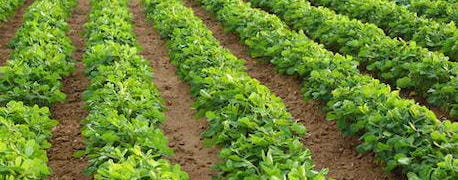
According to yesterday's crop progress report, 62% of the Illinois soybean crop is planted.
That's a lot of folks who still don't have soybeans in the ground. AJ Woodyard, BASF technical crop production specialist, has a few tips for those farmers.
First off, he advises sticking with the typical full-season varieties until June 20. Woodyard says this recommendation is based on research trials where full-season soybean varieties outyielded shorter-season varieties, even in late-planting scenarios.

June 21 Is The Summer Solstice. Is Your Soybean Crop In Trouble?
Next, Woodyard reminds growers that June 21 is the summer solstice, i.e. the longest day of the year. Past this date, the soybean plant's DNA recognizes the days are getting shorter and begins racing toward maturity.
"When we plant on April 20, we've got a full two months before June 21," Woodyard adds. "At this point, we have about a week."
As a result, he recommends trying everything to essentially squeeze more plants in as tight a space possible. So, boost planting populations and narrow up the rows, if possible.
"It's all about maximizing sunlight interception at this point," he notes.
He says around 130,000 plants per acre is a great planting rate for early in the year. By June, growers should be pushing soybean pops up to around 190,000 plants/acre.
Lastly, be mindful of disease issues. Any disease outbreaks will likely impact a much younger crop, Woodyard explains. So, stay ahead by scouting and be ready with a fungicide application.
Corn strategies
With corn, Woodyard says nitrogen is at the top of his list of concerns. Sure, pollination will probably hit at a more stressful time of the year. However, lack of N is a problem right now.
"We're starting to see yellow crops right now, which is a sure sign of nitrogen deficiency," he adds.
There's a good chance that major rain events removed fields' fall- and April-applied N. Woodyard recommends a pre-sidedress nitrogen test to assess N loss.
Additionally, Woodyard reminds growers that late-planted corn tends to grow taller than normal. Unfortunately, taller plants usually have spindly stalks. So, lodging and down corn could be a significant problem this harvest.
Woodyard says it may be wise to expand the harvest window a bit earlier this fall.
Lastly, as in soybeans, any disease will strike younger corn plants. Be sure to stay on top of scouting. Crop disease will only further complicate what could be a challenging harvest.
About the Author(s)
You May Also Like




